The economy may be creeping along at a snail’s pace, fueling the argument for more federal stimulus, but private money is still flowing quickly and quietly into innovative construction materials that promise to help stretch infrastructure budgets and save the planet at the same time. One such venture is Los Gatos, Calif.-based Calera Corp., which soon is to formally announce big plans to capture carbon emissions from coal-fired power plants and lock them up in concrete, the most consumed material on the planet, besides air and water.
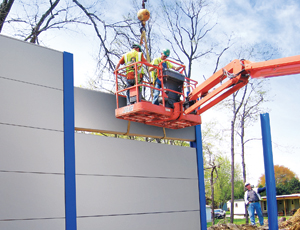
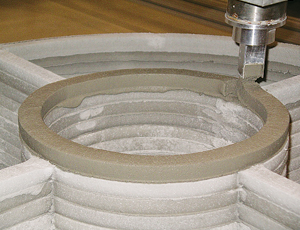
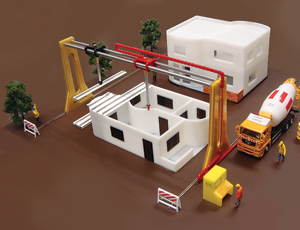
Little is known about Calera’s technology other than it proposes sending green house gases through seawater and using the resulting carbonate to replace traditional port land cement, whose manufacture and transportation contributes to an average 5% of the world’s carbon-dioxide emissions. Sierra Club has already called the technology a “game-changer.” Calerawas to unveil the technology at the World of Concrete trade show, held Feb. 3-6 in Las Vegas.
Around the country, similar stories are emerging, while on Capitol Hill President Barack Obama’s pending stimulus package may offer more than $150 billion in federal infrastructure funds.
Timing couldn’t be better for long-life, sustainable infrastructure materials. The administration says it wants the funds spent wisely. To do so, engineers plan to design roads and bridges that last up to 100 years. Accomplishing that task may require more money spent up-front on materials that will hold up over time.
While some call “life-cycle costing” a strategy that vendors use to sell more-expensive materials, it is catching on. “Engineers have always known about life-cycle costs, but it’s only in recent years it is beginning to be used routinely,” says Michael Sprinkel, associate director of Virginia Transportation Research Council, the scientific arm of the state’s transportation department. He says the problem with new materials is they may lack a performance record.
So the question is, will they work? “I have yet to see a boutique cement make the big time,” responds Steve Kosmatka, vice president of research at Skokie, Ill.-based Portland Cement Association, which represents several-dozen U.S. and Canada producers. He says carbon-capturing concrete “is a fascinating technology,” but scientists have seen few details yet. “There are a lot of things that are just unknown,” he says.
Not only could the federal stimulus create jobs and give aging public facilities a needed shot in the arm, the Obama plan promises greener construction where many new materials naturally fit in. Venture capitalists, looking for a more promising play than the stock market, are lining up with cash to bring them to market.
New Lease on Life
The global credit crunch mired the general economy and squelched the quick clip of public-private partnerships in the U.S. One pending deal is the $2.5-billion lease of Midway International Airport in Chicago, recently picked up by a consortium led by Citi Infrastructure Investors. The deal includes a financial review of the firms involved and now is stuck waiting for federal approval. For smaller investors, a promising g alternative is in construction materials that are built to last.
But persuading engineers to try out new materials is not easy. “The person who has to sign that paper, the project engineer, what’s in it for them to take the risk?” Kosmatka asks. On the other hand, contractors like new materials if they can lower their bid. “When we go to build a job, we have a list of materials that we are allowed to use, period,” says Eric Klimas, project manager for Pittsburgh-based Joseph B. Fay Construction Co. “You do anything you can to be competitive.”
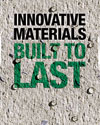
The stakes are growing as public facilities pile on the years. “If you are spending the public’s money on a long-term project, then you ought to care about the quality of the product,” argues Ron Baker, CEO of Arkbe Capital Ltd., which is backing a long-life rebar producer. “I think there will be a lot of capital going to work in the infrastructure space over the next five years. When the banks get back on their feet they will put their money here again.”
New methods are coming along for the ride. If you need to build a bridge, why not just print one out? In Los Angeles, University of Southern California professor Behrokh Khoshnevis is working on a computer numerical controlled-like machine that extrudes concrete in small, 1-in. lifts based on CAD models. Likened to a concrete inkjet printer, his patented“ contour crafting” device last fall attracteda grant from Caterpillar Inc. and could help NASA build a base on the Moon.
Such equipment, costing an estimated $750,000, would speed up construction, boost quality control and cut project costs by up to 25%, USC researchers say. A single-nozzle prototype can slipform1-sq-ft concrete walls in just 15 seconds. Scaled up, “I think it can do wonders for building infrastructure,” says Khoshnevis, who envisions even larger models.
Not So Far-Out?
Centria, a well-established, architectural cladding company in Moon Township, Pa., is looking to grow in the infrastructure space. Though it has supplied a polymer-core, metal-wrapped curtain-wall material for over 40 years, highway engineers are finding a new use for it as an inexpensive replacement to precast-concrete panels for highway sound walls.
Called the Eco Sound Barrier, the material was recently installed to create a 1,800-ft-long, 15-ft-high barrier on a$104-million rebuild of an 8-mile stretch of the Pennsylvania Turnpike. Engineers were encouraged by its fast installation but remain skeptical. “If it can withstand the test of time, it is going to give precast noise barriers a real run for their money,” says Kevin Scheurich, the turnpike’s project manager. The product, which weighs about 3 lb per sq ft, required larger foundations to resist overturning. But at $10 per sq ft, roughly 60% less than precast, it equated to a $366,000 savings.
It also claims to be greener than precast. Centria, along with a Carlstadt, N.J.-based admixture company, Hycrete, are some of the first to receive an emerging certification called “Cradle to Cradle.” Administered by Charlottesville, Va.-based McDonough Braungart Design Chemistry LLC, the program evaluates products recycled and recyclable.
C2C looks at materials holistically. Take PVC and nylon: “PVC has a better energy profile, including recycling, but the human and environmental impacts are very negative,” says Steve Bolton, MBDC’s business development manager. “The idea is, can things be circulated in closed loops?” With the help of new materials, America may finally be able to close its infrastructure loopholes.


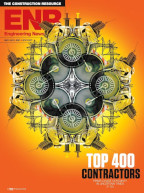
Post a comment to this article
Report Abusive Comment